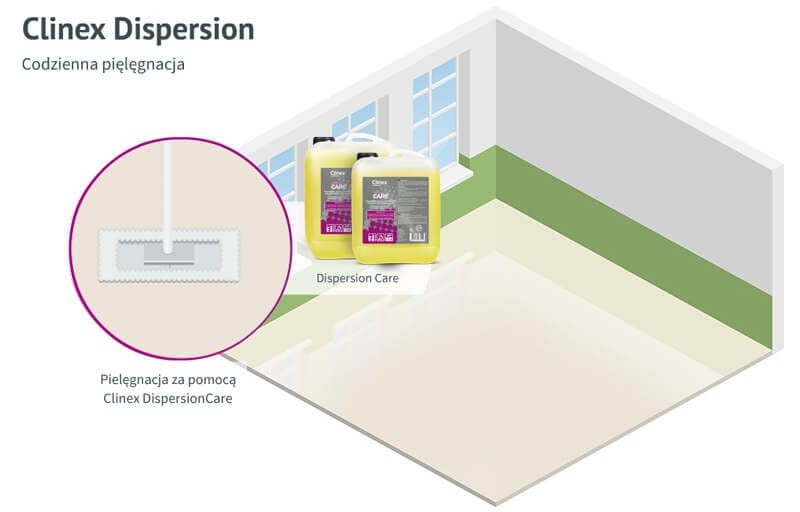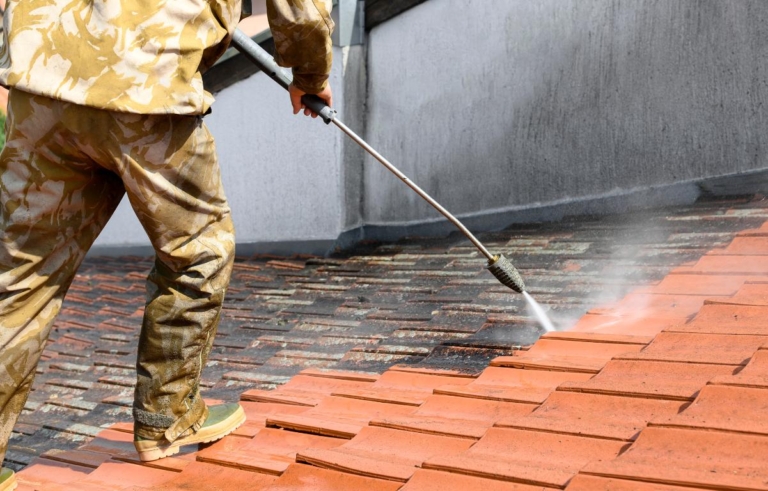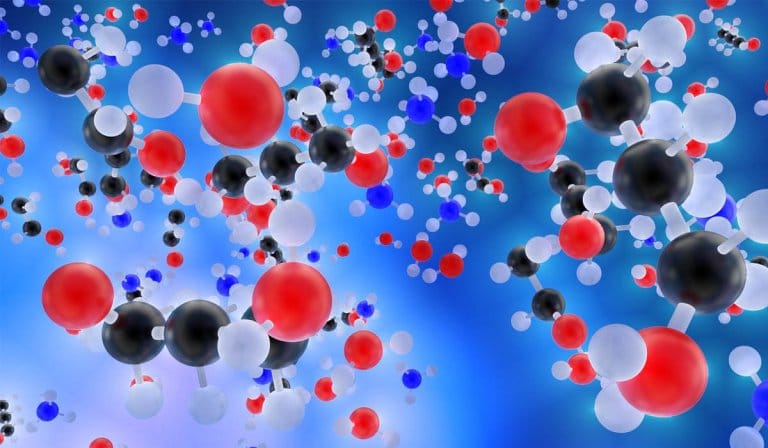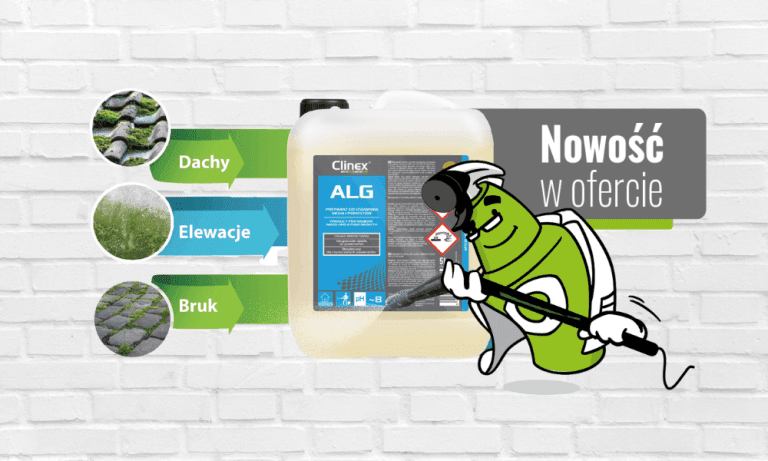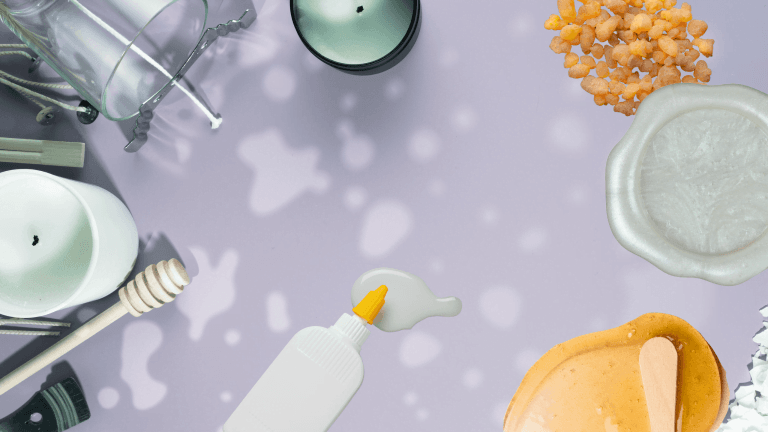As a result of their use, floors may lose their aesthetic appearance over time, especially in places that are frequently and intensively used. There are scratches and dirt that is difficult or impossible to remove. This often forces facility owners to replace surface coverings more often than they are financially prepared for. In order to avoid investment and maintain the durability of the surface for longer, it should be regularly protected. Polymer coatings are currently considered the most effective. They are very durable, even when used regularly, and protect the surface against damage, abrasion or degradation by certain chemical substances.
Polymerization chemical definition – what is polymerization?
Floor polymerization is a special process of applying polymer coatings to surfaces. From a chemical point of view, polymerization is the reaction of combining small molecules, which we call monomers, into larger molecules – polymers. What is a polymer ? It is a chemical substance with a very high molecular weight. Synthetic polymers are used, among others, in paints, varnishes, industrial oils and adhesives. Natural polymers are one of the basic building blocks of living organisms. In the case of polymerization, temperature plays a key role. It is defined by the special term MFFT, which is an abbreviation of Minumum Film Formation Temperature. The higher the MFFT, the harder the polymer coating will be.
Polymer coatings and their advantages
In buildings with intensive use, surfaces are protected with polymer coatings. This activity is called polymerization. After applying appropriate preparations, we obtain a mirror gloss effect, which translates into the aesthetic appearance of the surface. What is most important, however, is effective protection of the floor, creating a durable and dirt-resistant coating. An additional advantage of polymer preparations is their anti-slip properties, which guarantees safety and reduces the risk of slipping and possible accidents. It is also worth emphasizing that the surface protected in this way is easy to keep clean, and during cleaning and use the polymer is wiped off first, so any scratches do not affect the floor but the polymer coating.
In order to provide comprehensive polymer surface care, the Clinex Dispersion series of preparations has been created, which includes:
- Clinex Dispersion STRIPPER designed for removing polymer coatings, with high cleaning power, perfect for waterproof and alkali-sensitive surfaces
- Clinex Dispersion CARE intended for daily cleaning of polymer surfaces, effectively removing dirt
- Clinex Dispersion SOFT preparation – a universal glossy preparation based on polymers to protect the floor against the penetration of dirt and scratches
- Clinex Dispersion HARD, a hard protective preparation based on polymers – acrylic and polyurethane
In order to obtain the desired effect, the preparations should be used in the appropriate order, paying particular attention to the manufacturer’s recommendations regarding their use.
Is it worth using the floor and floor polymerization treatment?
Polymerization of floors , or polymerization of floors as you prefer, is a concept that all companies providing cleaning services know very well. There is no doubt that polymer floors are much easier to keep clean. The coating covering them shines beautifully and effectively protects the surfaces against damage. However, still few are convinced to this procedure. Meanwhile, it is the best investment to protect the floor and prolong its impeccable appearance. By applying hard polymer coatings, we also increase the visual value of the surface. In hotels and restaurants this is a key aspect. In such facilities, the floor becomes a representative part of the building, and its impeccable shine proves the excellent hygiene of a given point.
5 steps to protect surfaces with polymers
Stage 1 – stripping
Before the actual polymerization begins, the substrate to be covered with the polymer must be thoroughly cleaned. Any old coverings are contaminants for the polymer. These may be worn and cracked polymer coatings or defects in the floor. A polymer coating requires the substrate to be as close to ideal as possible. This will ensure accurate adhesion of the coating to the substrate and its protection. The first and most important process of cleaning and preparing the substrate is stripping.
It involves removing old polymer layers. Before starting this activity, the floors should be thoroughly cleaned – sweeped or vacuumed. For thorough cleaning, we use Clinex Dispersion Stripper , which is highly effective even on coatings accumulated as a result of long-term care. After shaking the container, dilute the preparation with water in proportions 1:4 and use the undiluted agent on polymer coatings. Spread the solution and leave for approx. 10-15 minutes, making sure that the surface does not dry out and remains wet all the time. We clean the surface using a single-disc scrubber with a hard pad.

Stage 2 – neutralization
To ensure that the polymer coating adheres properly to the surface of the substrate to which it is to be applied, it must be prepared for its application. Substances with lower or higher Ph may be deposited on the surface, which is undesirable. Even though they may be invisible to the eye, they can disrupt the polymerization process or make it completely ineffective. We neutralize surfaces with clean water using a wet-dry vacuum cleaner. This operation should be repeated several times to obtain a neutral pH. Once we obtain a neutral pH of the substrate, we dry it thoroughly.
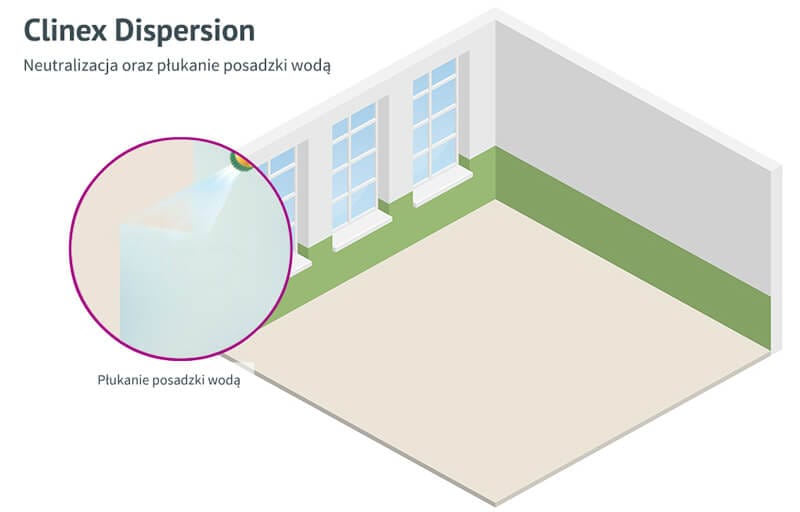
Stage 3 – drying the floor
The drying process itself can be quite long, so be patient. However, the accuracy of the surface neutralization will then come to light. Once the surface dries, which may take from 1.5 to 3 hours depending on the conditions in the room, we can only proceed to the next stage, which is applying the polymer layer.
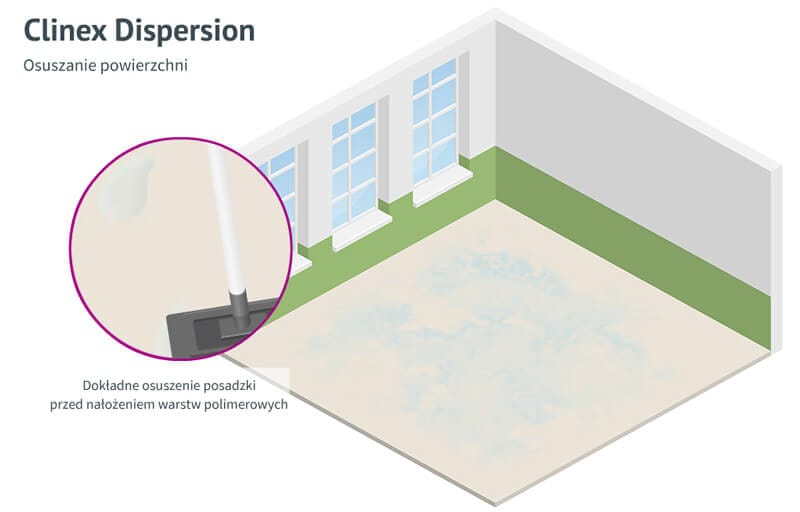
Stage 4 – applying polymer layers to floors
You will need Clinex Dispersion HARD . Before using it, perform an adhesion test on a part of the surface. It is an agent that creates a protective coating with additional anti-slip properties. Shake the container and apply it with a mop or soft cloth. We repeat the operation 2-3 times, but only after the previous one is completely dry, which may take approx. 40 minutes or more, then leave to dry completely for at least 1.5 hours. The durability of a surface protected in this way is estimated at 6-12 months. If you want to extend this time, you can polish the floor after 12 hours. An alternative to Clinex Dispersion HARD is Clinex Dispersion SOFT , which can be used on surfaces such as: vinyl, tiles, terrazzo, concrete, floor coverings, parquet and PVC.
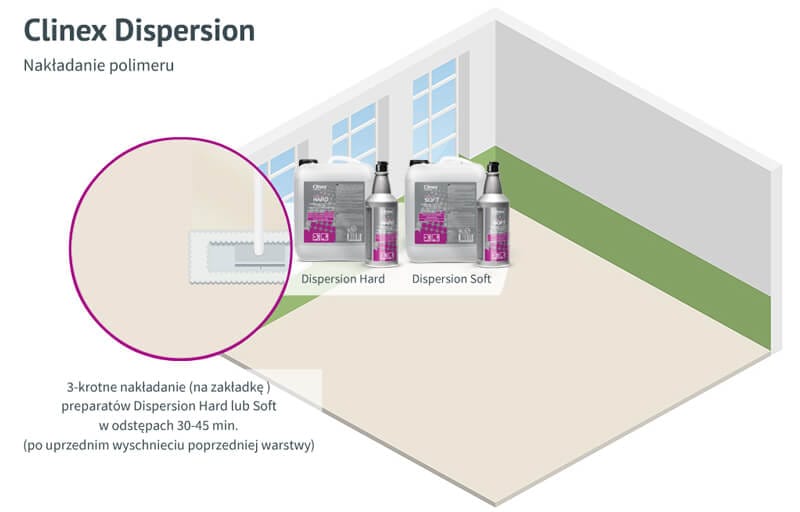
Stage 5 – regular surface cleaning
Maintenance of all polymer coatings is very important. If you want to maintain the properties of surfaces protected with polymers for a long time, you must take proper care of their cleanliness. For this purpose, we recommend Clinex Dispersion Care for daily washing. It is completely neutral and low-foaming. We dilute it 20-50 ml per 10 liters of water and wash it by hand.
Thanks to the polymer coating, the life of the floor is significantly extended, and it also gains anti-slip properties and an aesthetic shine. Moreover, such a surface is easier to keep clean.
Contaminants of various types and origins simply encounter a barrier preventing their penetration into the soil. Some substrates without a polymer coating could react negatively to certain factors and accelerate their degradation.
How durable is the polymer coating?
The polymer coating can last up to several years. Much depends on the intensity of its use and regularity of care. On the floors of large-scale facilities, it does not degrade with temperature fluctuations. For this reason, daily wet machine cleaning is able to keep it sufficiently clean and functional. By selecting appropriate cleaning products, we will also contribute to extending its durability.
